The Midget Submarines Of Aberlady Bay
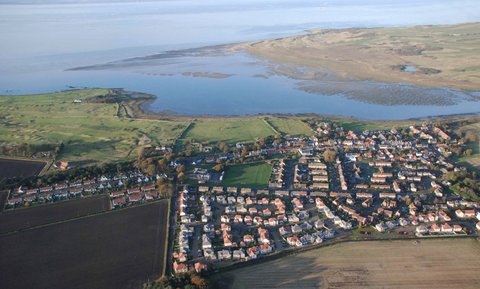
Gullane Sands, East Lothian - The remains of two midget submarines lie on the seaward edge of the sands of Aberlady Bay at the top of this aerial photograph.
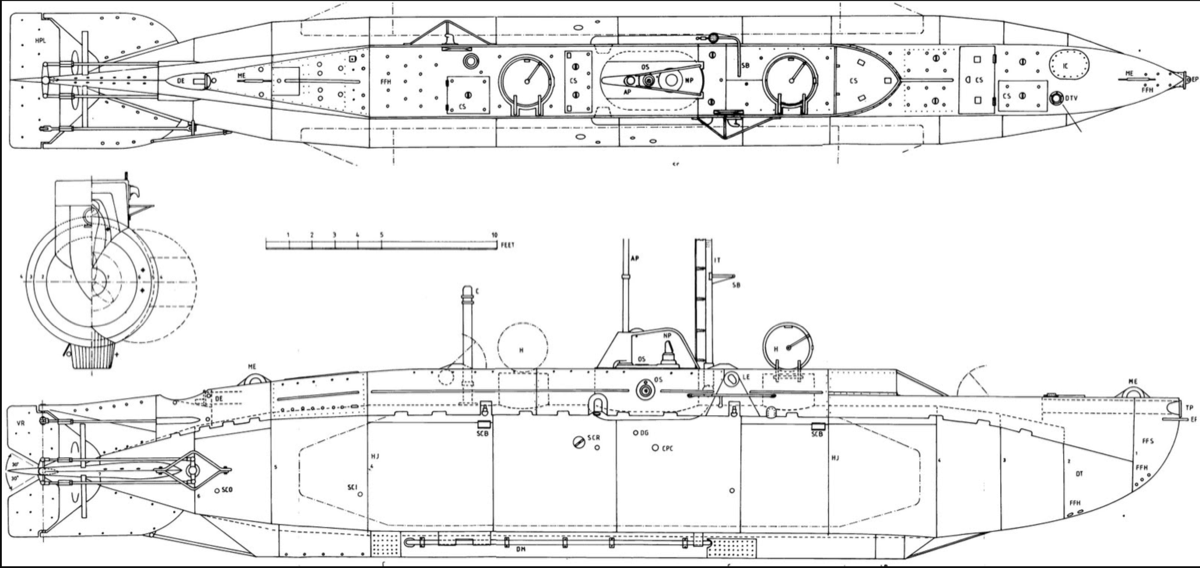
Drawing of the X-craft submarine.
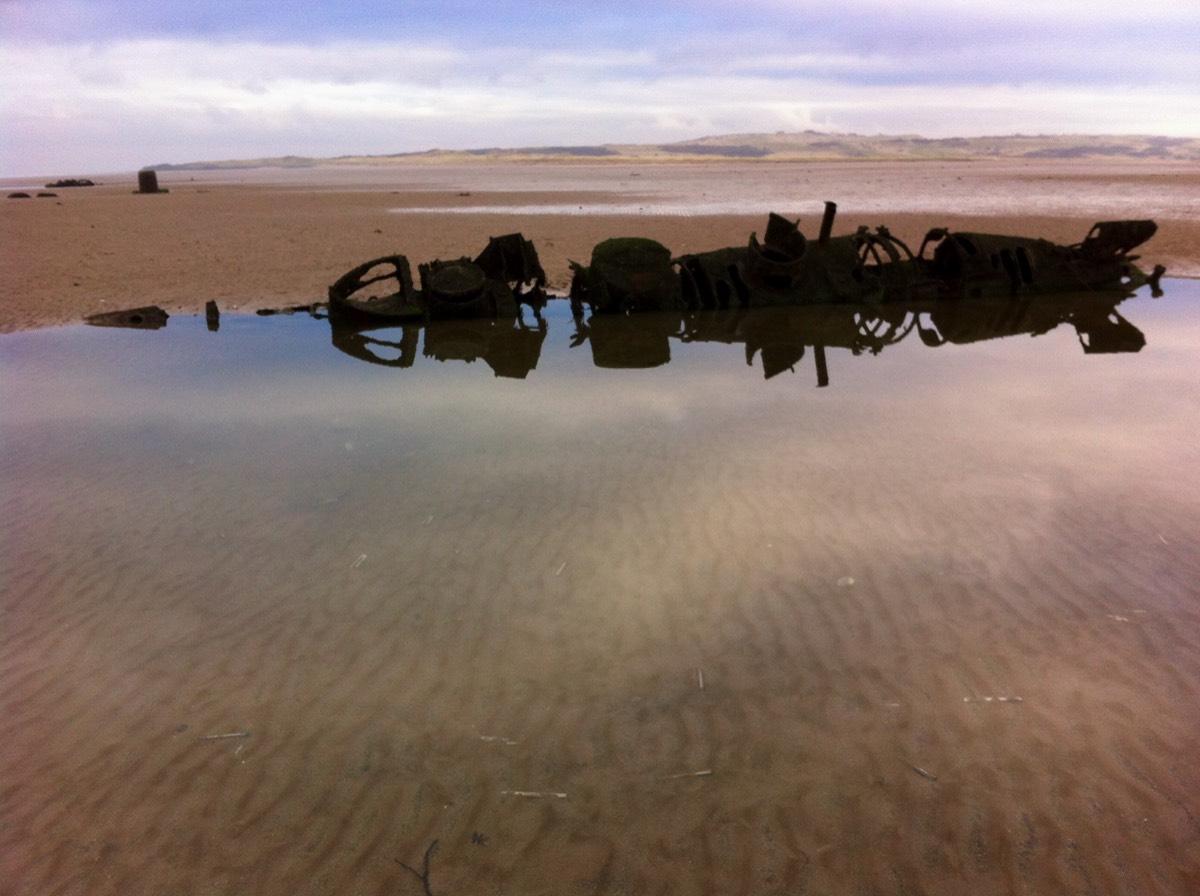
The two XT Craft half submerged in the sand with a concrete
mooring block between. The second lies to the top left of the
picture, just left of the mooring block.
X Craft Midget Submarines
Considerable efforts were made during the war to develop the potential inherent in small or midget submersible craft. Some, like the ‘human torpedo’ were little more than adapted torpedoes with frogmen sitting astride their dangerous cargoes. Others, like the X craft, were considerably more sophisticated and were, literally, fully operational submarines in miniature.
In September 1943, in Operation Source, carried out in the cold waters of the Kaa Inlet in northern Norway, two X craft (X6 & X7) were successful in putting the German Battleship Tirpitz out of action long enough for the RAF to finish it off in Operation Paravane a year later. This was done with one of Barnes Wallis’s weapons, the ‘earthquake’ bomb, codenamed ‘Tallboy’.
Up till then, the Tirpitz had tied up considerable naval forces, ‘blockading’ it as best they could, in order to prevent it cutting loose among the vital Atlantic convoys. The convoys, bringing much needed food, fuel and munitions from America and Canada, were literally the UK's lifeline. Tirpitz’s powerful threat was directly responsible for the disaster which befell convoy PQ 17 in July 1942 when twenty-four of its thirty-five merchant ships were lost.
Given the history of Operation Source (recreated in the heroic style in British cinemas in “Above us the waves”), it isn’t surprising that considerable interest has been aroused by the two examples of this craft which lie on Gullane Sands.
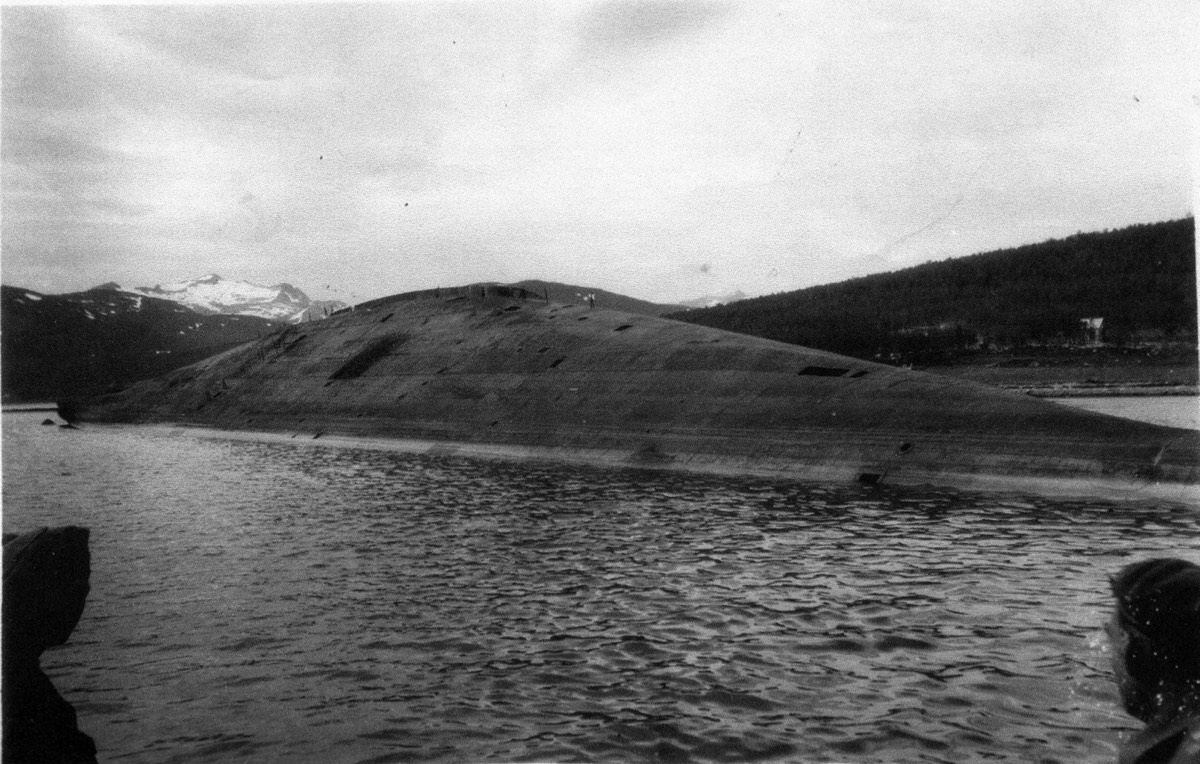
The upturned hull of the Tirpitz as photographed by Jack in 1945.
XT or X20?
The two X craft now lying on Gullane Sands were XT versions, designed to allow crews to train for eventual service on the active X craft. Fred Ainslie, who trained in all six XT craft in 1944, wrote the following in 1997:
“I do indeed know about the two wrecks in Aberlady Bay; they are both XT craft built in 1943 for the purpose of training X craft crews. I joined the flotilla early in 1944 and trained in all of the six XT craft in Loch Striven from our base (HMS Varbel II) at Ardtaraig House.
It was realised that many of the difficulties encountered on the operation [to sink the Tirpitz, when four of the six used in the attack were lost] were caused by the fact that the craft had been used for training new crews and for working up and were not in the best condition for such a difficult operation. Accordingly, it was decided to build a new class of midget submarine, the XT craft (T for training) and six of them (XT-1 to XT6) were built by Vickers. These craft were not fitted with giro compasses, had fixed periscopes and had no operational gear as they were intended only for training crews and also for use as targets for ASDIC training runs.” [source: private letter]
Over the years since 1946/47, when the Aberlady X craft came to rest on the sands, some confusion has arisen over which type of X craft they were. For example, Bob Baird in his book on “Wrecks in the Forth”, listed them as X20 craft. Fred Ainslie’s conclusion, arguably the claim with greatest weight, was ultimately confirmed by a number of investigations carried out by both Connect Archaeology of St Andrews and by the Nautical Archaeological Society, the final one of which concluded that both were indeed XT craft.
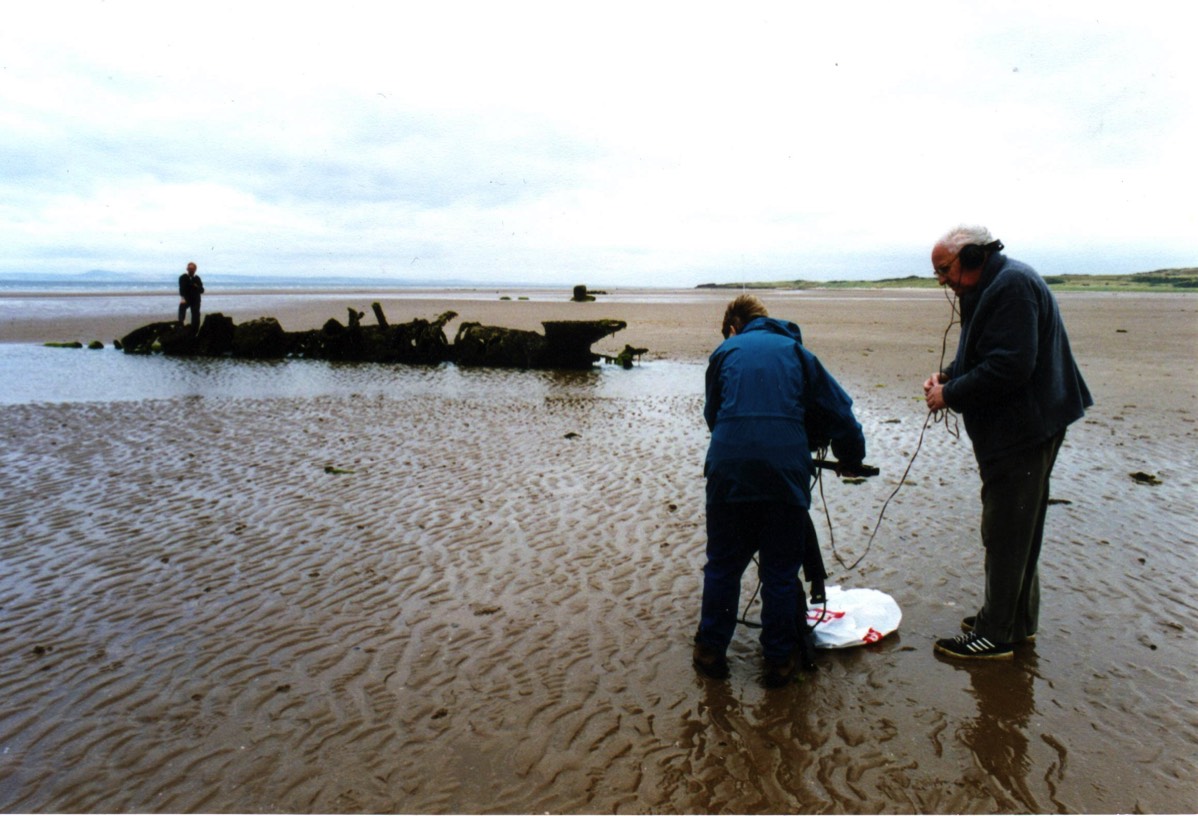

How did the XT Craft come to be on Gullane Sands?
This part of the story lies outside our normal time limits, but such is the interest that it must be covered here. X craft were used on a number of occasions in addition to the Tirpitz raid: they were used, for example, to reconnoitre suitable landing beaches and to guide ships coming into land on Normandy’s shores in 1944. A number, labelled XE craft, were converted for use in the Far East where they were used on a significant number of operations against Japanese communications and shipping.
East Lothian’s ‘pair’ were used for much less glamorous work. In June 1945 all six XT craft and the two prototypes (X3 & X4) were declared surplus to requirements and sent to the Royal Naval Construction Establishment in Rosyth. There they were to be employed in a series of tests designed to explore in full the effects on the X craft of a) submerging to collapse depth; b) different types of cannon shell and c) non-contact charges.
These tests were carried out between 1946 and 1947. Test B (firing cannon shells) was carried out on Gullane Sands on the 2nd and 7th May 1946. The rupture tests were carried out elsewhere, possibly elsewhere in the Forth, in November 1946 and a second series in March 1947. Once the testing was completed the craft on Gullane Sands were simply left to sink into the sand. Elsewhere in the Forth lie a number of other X-craft. K-4 and K-17 have been located in the outer reaches of the Forth during the survey work carried out prior to the construction of the new Offshore Wind Farm, Near na Gaoithe.
A short DVD about the XT craft of Gullane Sands can be obtained by using the contact button below and sending the necessary details. Cost £8 plus P & P. Alison Boutland was responsible for uncovering the contemporary film clip it contains.

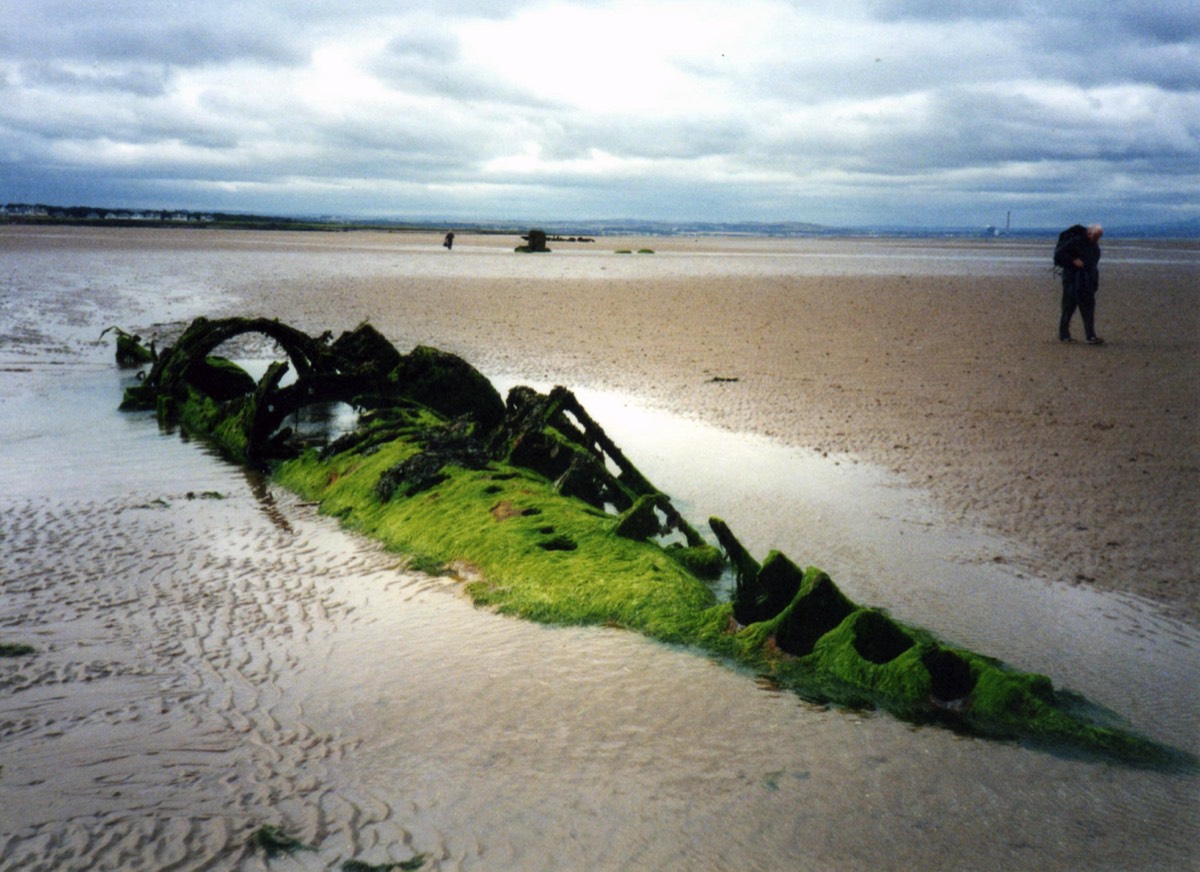
The Cannon Tests
The trials were conducted by the Naval Construction Research Establishment at Rosyth and utilised aircraft from both the Fleet Air Arm base at Donibristle (two Seafires) and East Fortune (a Mosquito). Three naval vessels attended the first trial on the 2nd of May 1946, including the Gamma and two Motor Fishing Vessels. The tests were controlled by officers in the Gamma. The two XT craft (whose exact numbers have not yet been positively identified) were anchored well apart, both to a common central concrete block and to anchors on their other side. The operation was timed so that the tide floated the two submarines, and the weather was fine with light wind and good visibility. Each plane made two ‘attacks’ and both XT craft were sunk. The planes, for this test, were using Armour Piercing cannon shells.
The holes were plugged, and the submarines re-floated to be attacked again on the 7th May, this time by one Seafire and one Mosquito using High Explosive shells. The official report indicates that all did not go quite to plan this time as both weather and tide proved less suitable. The tide was further out than desired, and the XT craft were clearly resting on the bottom when the test was carried out.
The conclusion of these tests was that H.E. shells were more effective than A.P. ones.
Film Evidence - A film, shot by Naval personnel at the time, records the above tests. It can be seen via You Tube "Aberlady X-Craft 1946”.
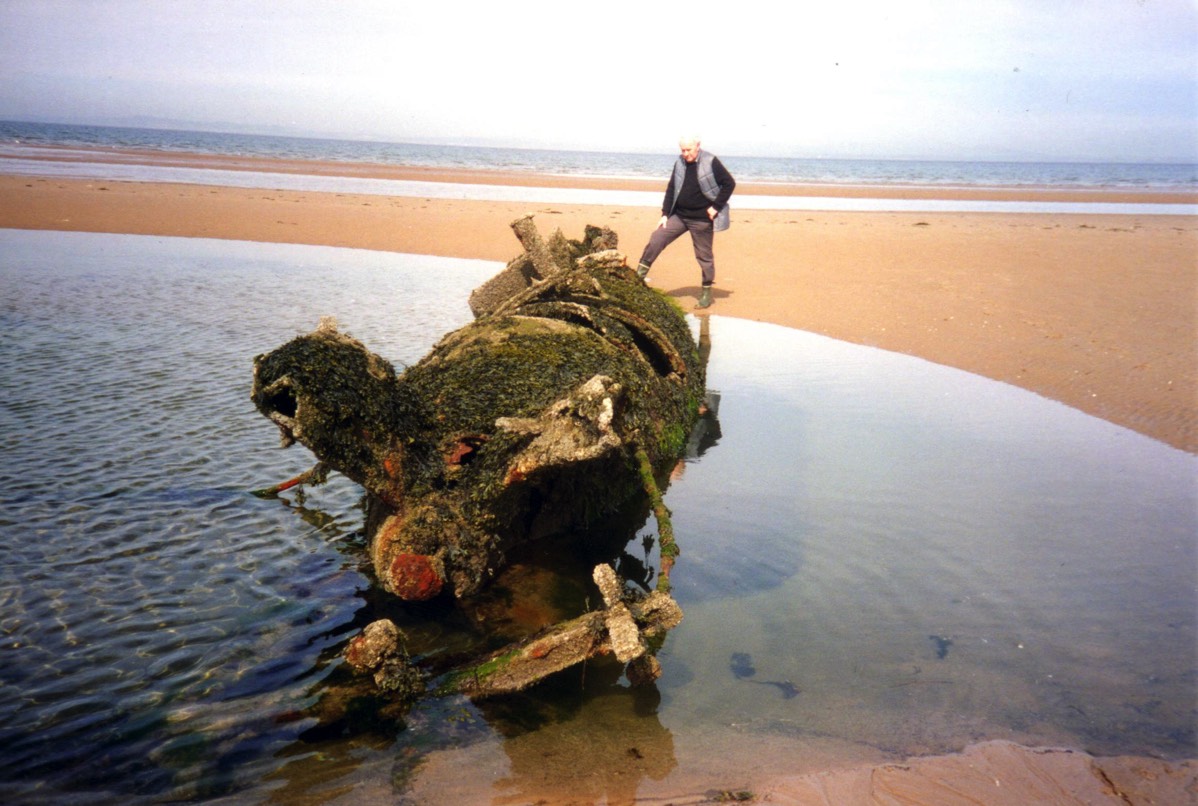
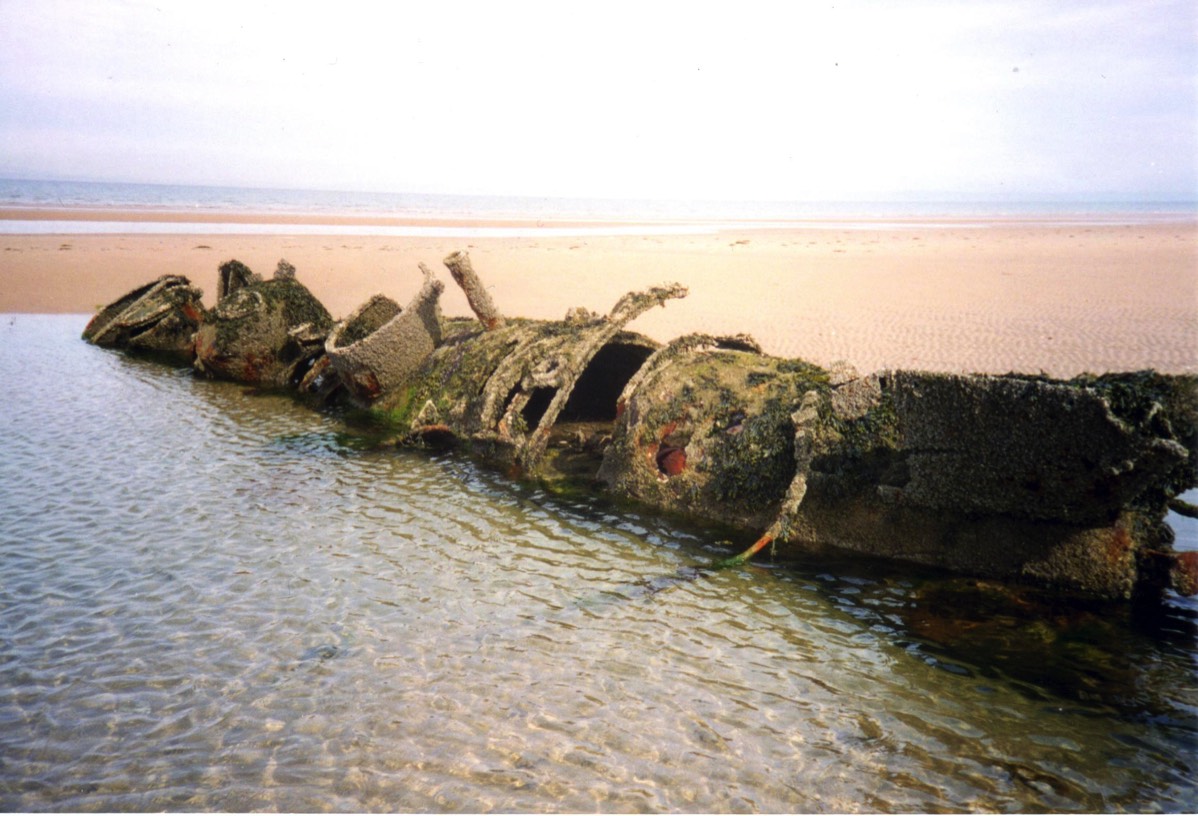
The western Aberlady XT wreck.
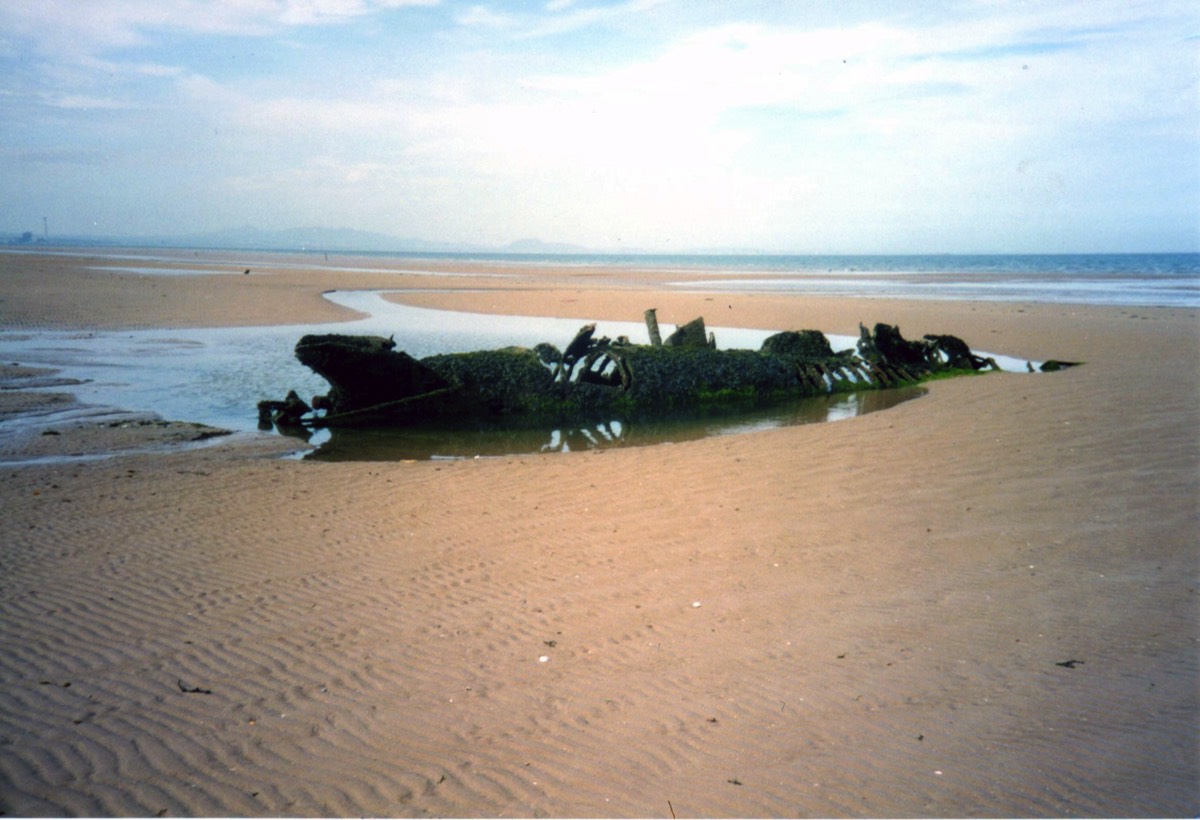
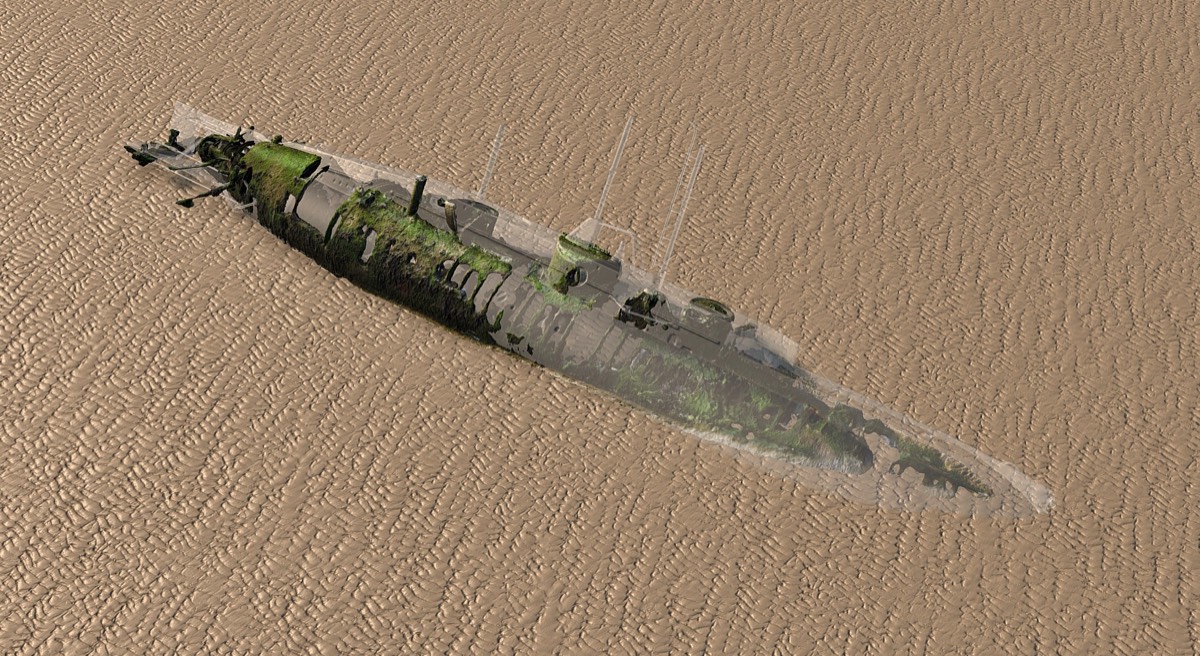
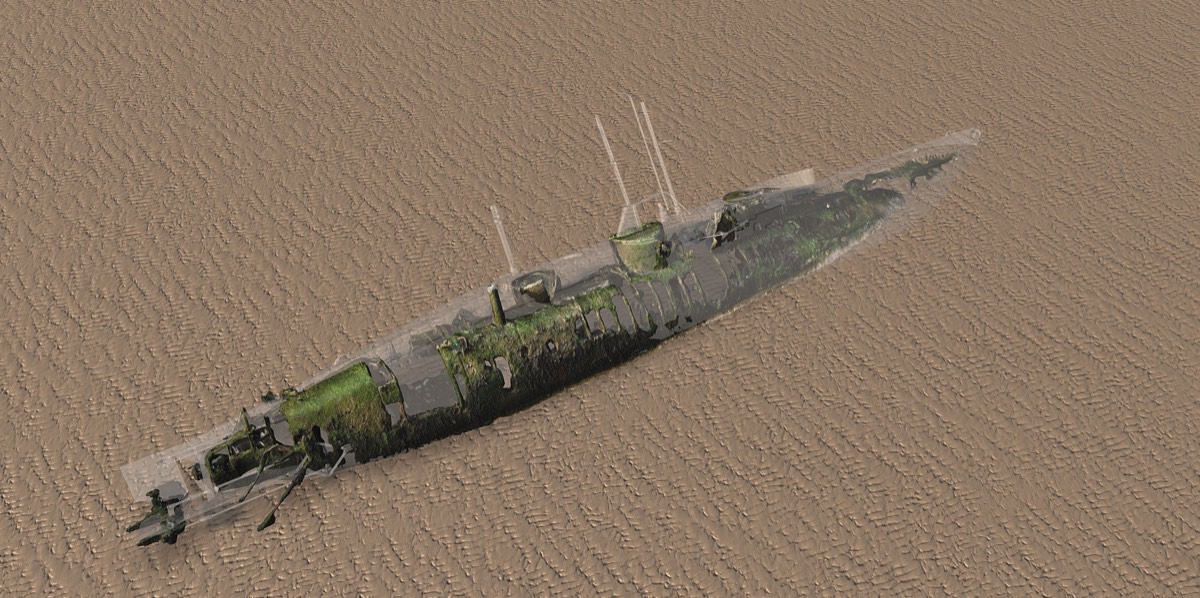
[With grateful thanks to Wessex Archaeology. www.wessexarch.co.uk]
Nigel Tranter And The X Craft
The story of how the famous locally-based author, Nigel Tranter, was an almost daily visitor to Gullane Sands is well known. He visited the XT craft in the years after their demise when they were still in reasonable condition and he has written how, while out wildfowling one day, he took shelter in one of them only to find, as the tide rolled in, that he couldn’t get out again! He lamented the ruin of his shotgun used in a fairly desperate attempt to prise open the hatch but, by his own admission, he was very lucky to get out alive!
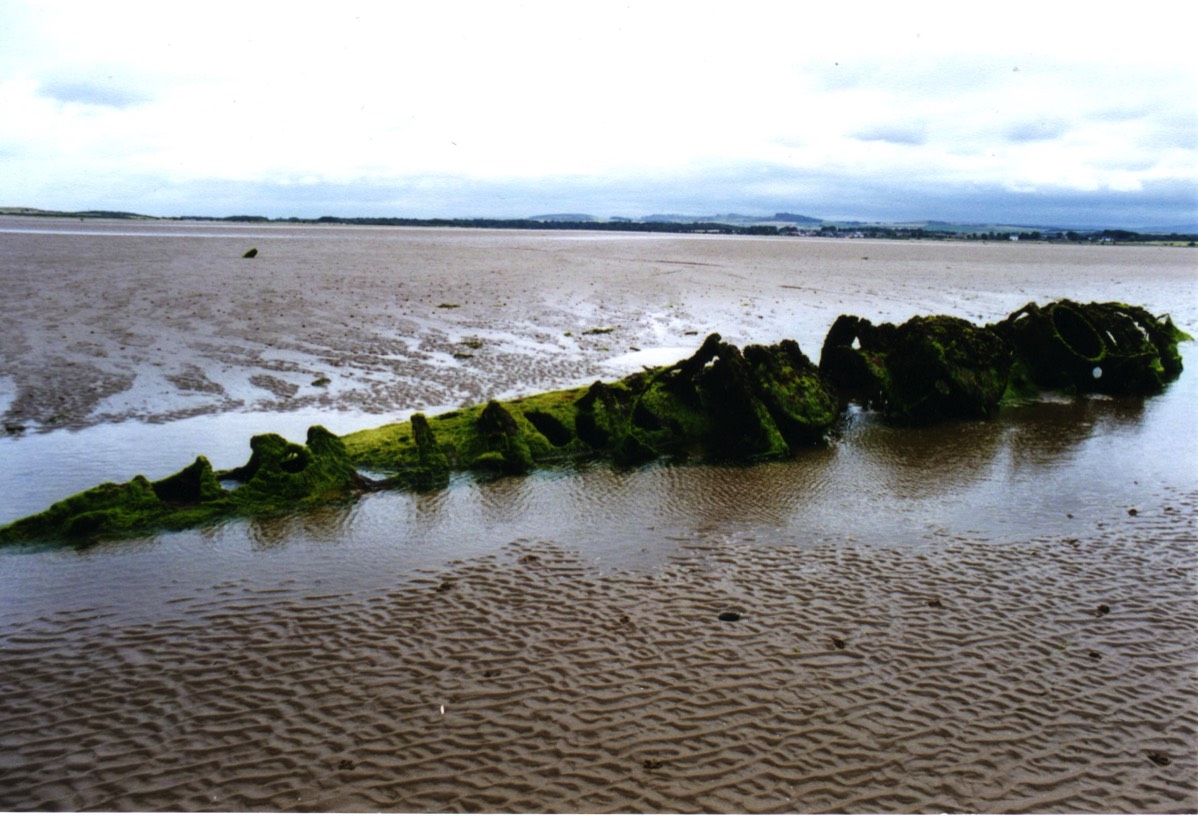
The eastern XT craft on Gullane Sands.


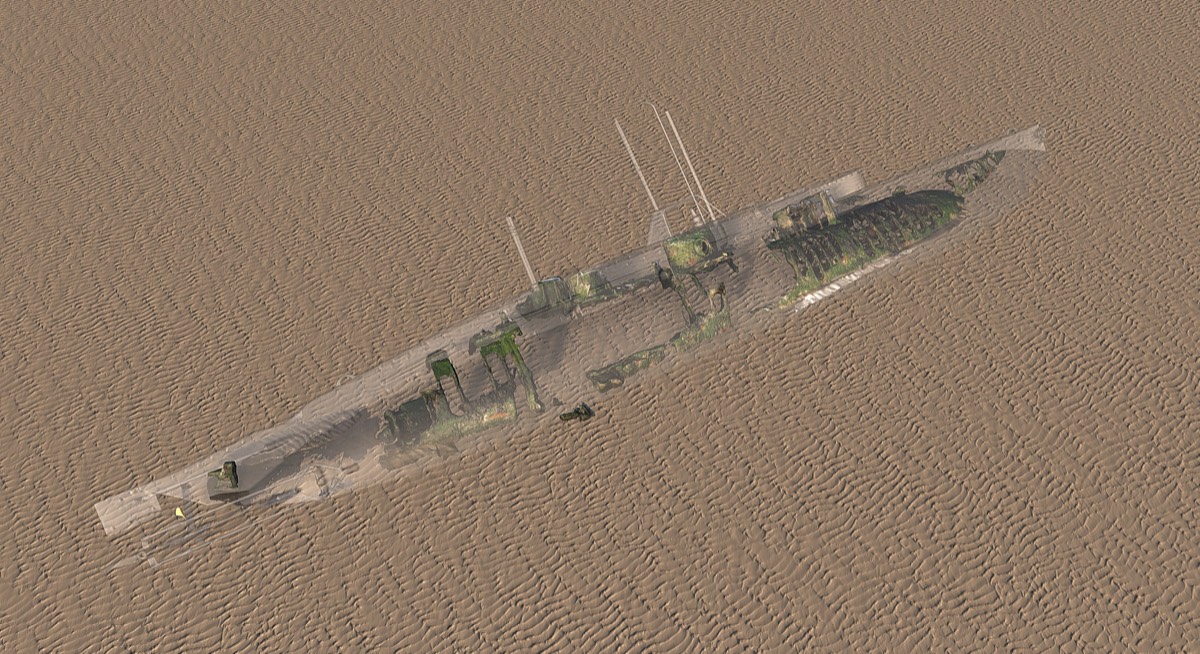
Three images of the eastern XT craft photographed by Wessex Archaeology with a superimposed image of the complete submarine.
[With grateful thanks to Wessex Archaeology. www.wessexarch.co.uk]
Eyewitness - Fred Ainslie
Fred Ainslie, who, as mentioned above, trained on X Craft during 1944, provides the following account in which he describes some interesting facts about them. He also writes about the theory that X Craft might have made use of the small harbour cut out of the rock at the Gegans, on the coast near Seacliff. Fred wrote:
“I have to say that it is extremely unlikely that X craft were ever in that part [the harbour by the Gegans] of the coast, indeed apart from the two wrecked XT craft in Aberlady I have never heard or seen any of them in this part of Britain. …. our X craft…had an operational crew of four (Captain, First Lieutenant, Engine Room Artificer and a Diver) and two passage crews each with one officer and two ratings who took the boat, towed and dived, behind a big submarine as close as possible to the target.
X craft were difficult to moor, you couldn't just go alongside a pier with any confidence, so they were either hoisted in and out by the depot ship or were moored at some prepared berth. At Port Bannatyne there was a structure called the 'baffles', a series of floating iron boxes which rose and fell with the tide and at Loch Striven Head there was a catamaran moored some distance from the shore alongside which the craft were moored.
Since writing the above I have been to Seacliff to see the 'dock' at the Gegans and I am now certain that [this has] nothing to do with the X craft in which I served: an X craft was nearly fifty-two feet long and too big for the dock. Still, someone must have put it there for some use, it is still in good condition and could well have been built between 1939/45, but not for us.
…I believe the that the two at Aberlady are XT1 and XT2 and you will see that these two are recorded as having been listed (whatever that means) until October 1945 and that the other four of the XT class were disposed of earlier… Incidentally X craft were usually moved around the country by train…"
Latest developments
Wessex Archaeology also supported the construction of a very realistic model of an X-Craft built by David Ulke and handed over to Ian Malcolm, a representative of Aberlady and District History Society, and John MaCormack, publican at the Old Aberlady Inn, on 23rd March 2022. The model will be displayed in the Inn.

David Ulke, Ian Malcolm and John McCormack
[David Haire]
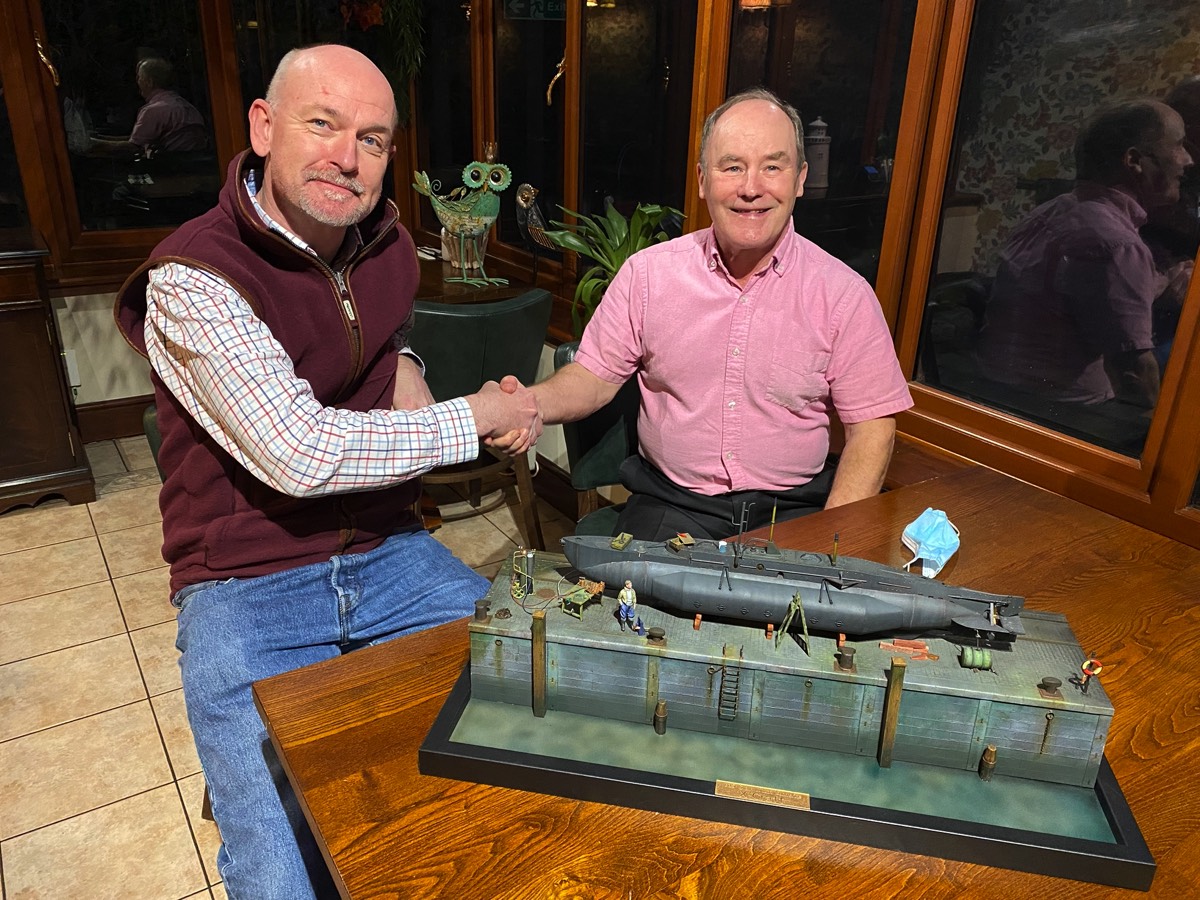
David Ulke hands the model over to Ian Malcolm, 23rd March 2022 in the Old Aberlady Inn
[David Haire]

